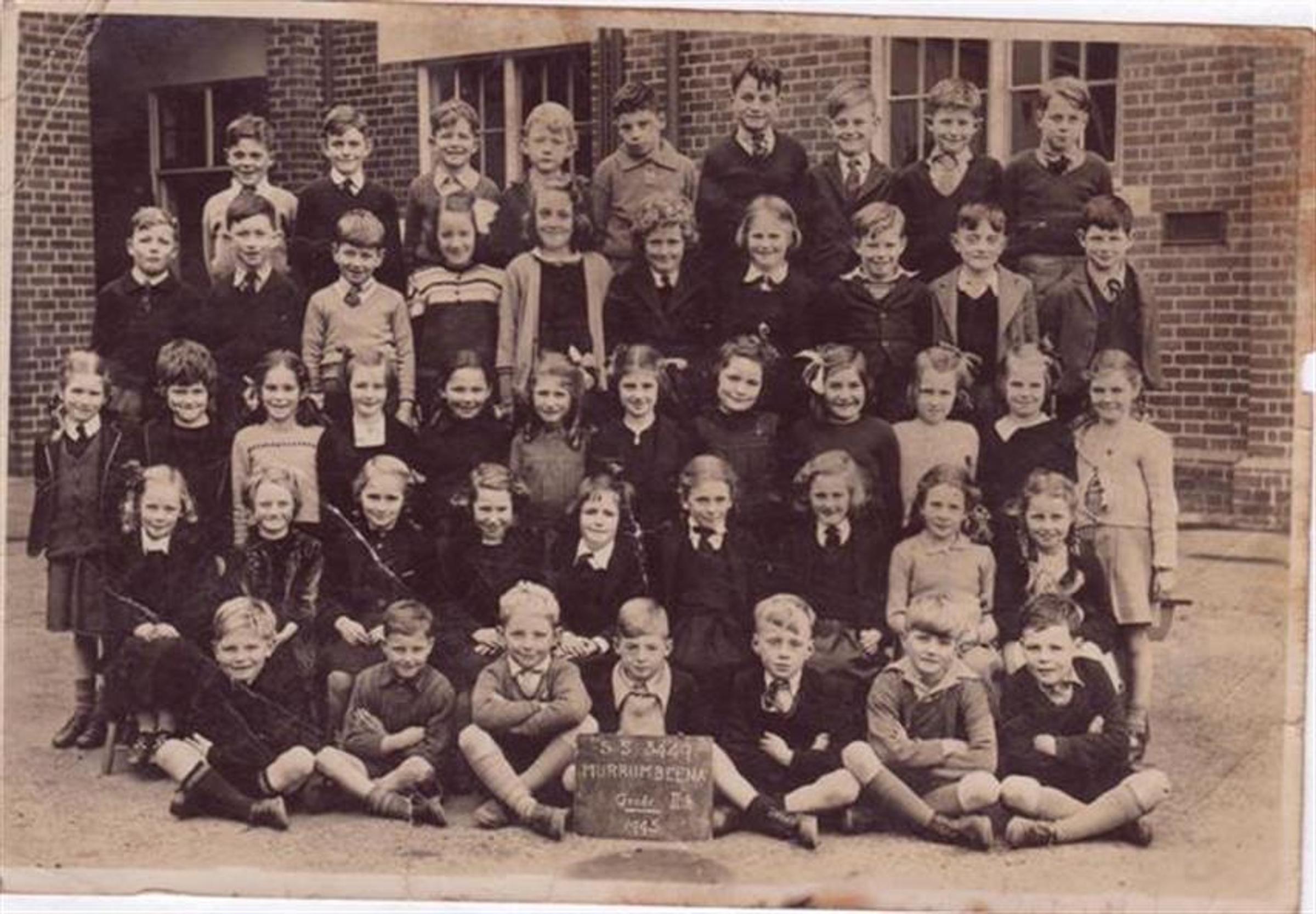A Special Visitor

Last term, MPS was contacted by former pupil, Norman McDonald, who had attended the school between 1940-1946.
On his visit to Melbourne, Norman was given a tour of MPS by Jeanette Baker and Amanda Daemen, and he kindly sent the following email to Amanda with an accompanying letter after his visit.
It is too good not to share with you!
'It is almost a month since I, with my brother Graeme, visited the Murrumbeena State School No.3449.
The time spent at the school was a highlight of my visit to Melbourne, my home town, and still the home of many of my extended family.
You and Jeanette were particularly generous in the time that you hosted us and I am most grateful.
You invited me to follow up with some written memories. It has been a happy exercise doing so and I attach an 'essay' with some memories of the school as I experienced it in the 1940's and in 2022.
The experiences of recent weeks have made me especially proud and appreciative of my old school and confident that it will well serve the community and its children for many more decades and perhaps another century.
With thanks and best wishes to Jeanette and yourself and to the school community.'
Norman McDonald
NORMAN'S LETTER
MURRUMBEENA STATE SCHOOL No 3449
As a former student at the Murrumbeena State School (1940-1946), I have had very little association with the school since I moved on to the Lloyd Street Central School and then Melbourne High School.
On my first visit to Melbourne since pre-Covid I was invited with my brother to visit our former school. We were given a comprehensive tour of the whole school from which I gained two major impressions. The first was an extraordinary familiarity with the school. Though it is over 75 years since I was a student there and in spite of some major changes in furniture and teaching facilities, a walk along the corridors and up and down staircases was as though I was a student again. The second impression was the ongoing strength, dependability and confidence which surrounded me. Well constructed and maintained and with over 100 years of history of students and teachers, and with the major establishment of a new library soon to be commissioned, I sensed that the Murrumbeena School could well be serving the community and its children in another 100 years. It was a proud moment in which to be surrounded by history and memories and looking into future possibilities.
After our tour, we were invited to view some of the school’s archives and I was invited to record some memories and changes.
I gladly do so, in no particular order.
- The absence of the bell. The brass bell, approximately 7 inches (18 cms) across its mouth and with its handle 15 inches (40 cms) tall was located on a stand attached to the foot of the stairs beyond the main entrance. It was taken into the quadrangle and rung to signal the end of periods of class work, and also to the rear doors of the school, opening to the school yard to signal the morning assembly and the end of recess periods. The bell was rung by a student “bell monitor”, a privilege I enjoyed (in 1945, I think) The bell has obviously been replaced by modern timing and alarm technology, but perhaps the bell still rests in a cupboard or storeroom.
- The outside recreational space appears to be more extensive. The shelter sheds for girls and boys have gone, as have most of the trees that were scattered about the grounds. However the space has grown and is more intentionally used, as seen by the variety of markings on the pavements.
- Internally the classroom space is unchanged, but its layout and usage is vastly different. My class photographs show, for example, a class size over 42 boys. Today – smaller classes and more attractive environment speak of changes to the teaching environment.
- Heating-cooling have changed. Through the winter months, heating for the whole class was provided by an open fire in a small grate in one front corner of the classroom. Perhaps the grates are still there, hidden behind the short corner wall. In summer, opening windows to enable some hot breeze, was the only relief available on some of the hottest and most humid February days.
- Perhaps one of the most significant differences is the absence of the air-raid shelters and air raid drills. I was a student at Murrumbeena during most of the years of the Second World War. Fear of invasion by hostile forces was real across the country and Australians were required to be prepared for the worst. Air raids were seen as a real possibility, and around the perimeter of the school grounds, trenches approximately 1.5 metres in depth were constructed, to which the school community would evacuate should an air raid occur. Evacuation exercises, in which students and teachers would march (not run) in an orderly way to the trenches was a regular activity. It was a happy time when the trenches could be filled and grounds returned to their regular use.
- Since the day of my visit, my mind has returned to the classrooms as I have remembered again those who were my teachers, some of whom were giants in their time and profound in their influence. I have looked again at photographs, remembering more names than I expected and wondering about the life journeys of many of them.
I am immensely grateful for Murrumbeena State School No 3449 and its teachers, men and women who had an important place in my early life.
I remember many with whom I was a fellow student over those years and hope that their appreciation is as rich as mine. And I thank Amanda and Jeanette who warmly welcomed us back into the school and facilitated so many rich memories.
(Rev) Norman McDonald
7 June 2022
